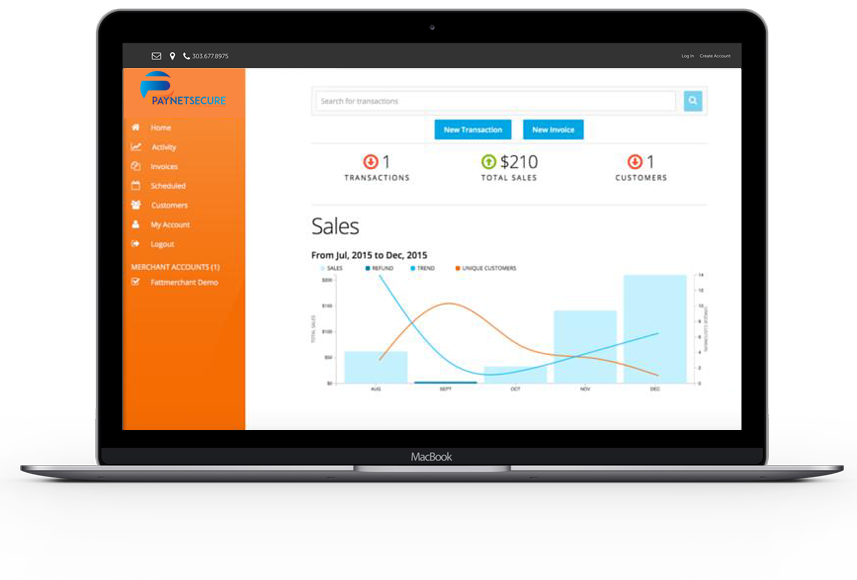Nutraceutical companies offer a lot to their consumer base, which includes anyone looking to improve their health or beauty—so, everyone. These products include dietary supplements, weight-loss aids, colon cleansers, skin care products and anti-aging products. Despite the money-making potential for nutraceutical businesses, companies are having a hard time getting approved for a merchant account due to their industry’s widespread label as “high-risk.”
Banks and financial institutions tend to stay away from anything that could be risky in terms of financial liability. However, there are still account providers willing to work with nutraceutical companies, but even they have standards. This post outlines a few ways nutraceutical businesses can increase their chances of getting approved for a high-risk nutraceutical merchant account—which are essential for business success and growth!
Do what you can to provide fantastic customer Service
One of the first things an underwriter will do upon receipt of your application is search customer reviews of your company online. Too many negative reviews of your products or services indicates that your company may be vulnerable to an especially high rate of chargebacks, or that your financial success may be only fleeting. After all, consumers trust other consumers more than they trust advertisements or sales techniques.
What should you do when you get negative reviews?
Your company should be monitoring popular review sites, like Yelp, Google Reviews, Amazon, etc. to analyze common complaints and any patterns among dissatisfied customers. You should also take the time to address customer complaints directly when you can. Respond to reviews left on your website, and if there are complaints about a procedure that you could feasibly change, make the change.
Establish company history
High-risk merchant account providers tend to deny start-ups a merchant account. You have to prove your reliability and viability as a company. Account providers don’t want the financial responsibility left behind by a failed business, and most young companies are doomed from the start. After your company has proved viable, assuming there are no other red flags attached to your operations, you will have a shot at getting approved for your merchant account. To grow even further, you need to be able to process card and ACH payments—you can’t run on PayPal forever.
Decrease your rate of chargebacks
The number one detractor from a business applying for a merchant account is the rate of chargebacks issued against it. In fact, a likelihood of chargebacks is probably what’s stopping your business from ever being approved for a standard-risk merchant account. Chargebacks are typically initiated by credit card companies on behalf of their customers in response to a purchase that may not have been authorized. Though consumers aren’t supposed to request chargebacks for dissatisfaction with products, there isn’t much stopping them from doing so.
This is another area in which quality customer service proves worthwhile. If you can satisfy a customer’s complaint, and do so before they feel they need to resort to calling their credit card company, you should! Also, maintain your records, employ fraud-fighting techniques (discussed below) and remain transparent about the products your clients will be receiving (also discussed below).
Carefully consider business model
Certain business models add risk to businesses applying for a merchant account, especially those already operating in an industry known as “high-risk.” These are some of the more common billing methods that might require you to be extra cautious regarding chargebacks and customer satisfaction:
- Deferred billing: The longer between billing a customer and providing the service, the more vulnerable you are to chargebacks.
- MOTO: MOTO stands for “mail-order, telephone-order,” but the term just encompasses all card-not-present transactions.
- Continuity billing: This puts you at risk of chargebacks from customers who may not realize they are going to be billed regularly or who forgot they signed up for a regular service. Nutraceutical companies that use this business model in conjunction with free-trial offers must be especially clear about the terms customers are agreeing to.
Decrease the risk of fraudulent transactions
Identity theft is one of the top causes of chargebacks, and security measures should be taken to ensure that all card transactions are valid. The right merchant account provider should also be able to provide you with more fraud-fighting and chargeback prevention tools to secure the reliability of your finances even further. These measures should include:
- Requiring a CVV code from customers: the three-four digit number on the back of most credit cards helps to verify that the customer actually has the physical card with him or her and not just a stolen credit card number. CVV verification is free, and the number cannot be stored anywhere at any point during a transaction, so it is more difficult for identity thefts to obtain.
- Manually reviewing suspicious orders: Don’t approve any large orders that haven’t been manually reviewed. You can always follow-up with the customer to verify the order they’ve requested, or ask if they might have another credit card number they can use. It is up to your judgment to decide when this might be necessary—as you might upset a genuine customer.
Be Transparent
Above all else, present clear and accurate terms to your customers. If you are perceived as operating in a deceitful manner, it will be highly difficult to get approved for a merchant account with a quality provider.
Conclusion
Your application for a merchant account needs to prove reliability and success in mitigating the risks associated with your industry. Once you successfully obtain a merchant account, your business will have access to more tools and resources to fight fraud and prevent chargebacks, and you’ll be able to offer your customers more payment options.
Remember, if an account provider advertises unrealistically low transaction fees or rates, or guarantees approval of all applicants, they probably aren’t trustworthy. A quality high-risk merchant account provider will need to trust your business just as much as you will need to trust in them.
